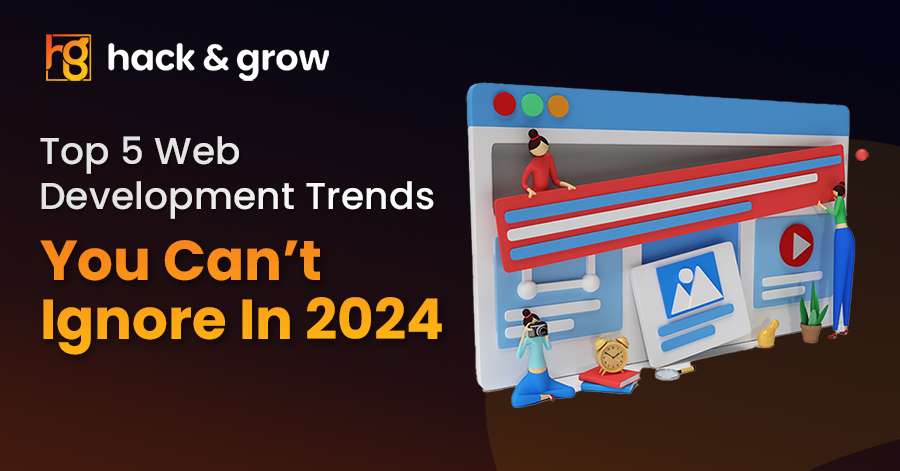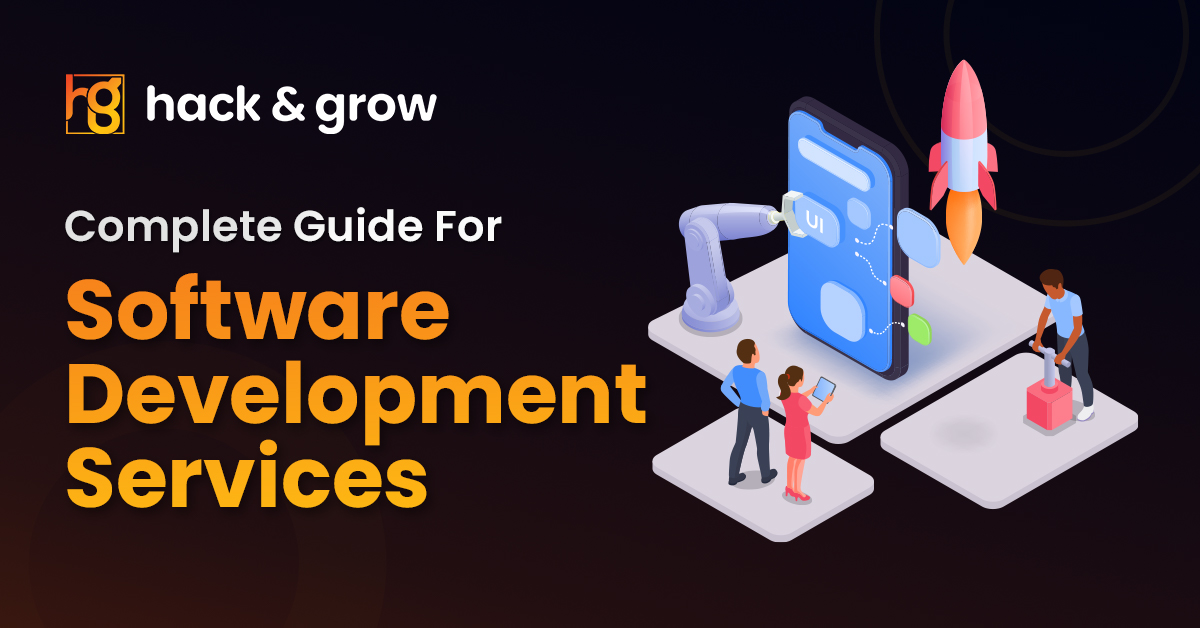In the ever-evolving digital world, Web Development Trends are crucial for businesses to stay competitive. Whether you’re a developer, designer, or business owner, understanding the future of web development is essential for growth. In this blog, we explore the top 5 web development trends for 2024 that will shape the industry and offer new opportunities.
Let’s dive into these Web Development Trends and see how you can apply them to stay ahead of the curve.

1. Progressive Web Apps (PWAs)
One of the most influential Web Development Trends in recent years is the rise of Progressive Web Apps (PWAs). PWAs offer a fast, reliable, and engaging user experience that works seamlessly across various devices, bridging the gap between web and mobile applications. They allow users to install web pages directly to their home screens and function even when offline.
Why PWAs Matter:
- Fast Loading Times: PWAs are lightweight and load quickly, reducing bounce rates.
- Cross-Platform Usability: PWAs can run on any device with a browser.
- Improved Engagement: PWAs allow push notifications and offline functionality.
Example:
For example, popular platforms like Twitter and Uber have adopted PWAs to offer smooth, app-like experiences without requiring downloads.
By integrating PWAs into your web strategy, you not only improve user experience but also enhance your SEO performance.
2. AI-Powered Chatbots with Web Development Trends
The integration of AI-powered chatbots into websites is one of the more innovative Web Development Best Practices. These intelligent bots streamline customer service, providing users with quick and efficient responses to their inquiries. This trend is particularly important for front-end development, as it directly impacts the user’s interaction with the website.
Benefits of AI Chatbots:
- 24/7 Availability: AI chatbots ensure that users get assistance any time they need it.
- Personalization: AI tools can offer customized responses based on user behavior.
- Cost Efficiency: Reducing the need for human interaction saves costs and improves efficiency.
Example:
E-commerce websites are among the most common users of AI-powered chatbots, where they handle customer inquiries, recommend products, and facilitate purchases in real time.
For businesses looking to enhance their customer experience, chatbots are indispensable in the future of web development.
3. Single-Page Applications (SPAs)
Single-Page Applications (SPAs) have been gaining momentum as a prominent Web Development Trend. Unlike traditional multi-page websites, SPAs load all the necessary resources for a page at once, so users don’t have to reload the page when they click a link.
Advantages of SPAs:
- Faster Load Times: Since SPAs load content dynamically, they significantly reduce server requests.
- Improved User Experience: SPAs offer a seamless, app-like experience, ideal for mobile browsing.
- Simplified Development: SPAs streamline the development process, especially in front-end development.
Example:
Google Maps is a perfect example of an SPA, offering a smooth experience without constantly reloading the page.
As mobile traffic continues to dominate, SPAs will play an increasingly important role in web design trends.
4. Motion UI
In 2024, Motion UI continues to be a key player in web design trends. Motion UI enhances the visual appeal of websites by incorporating animations, transitions, and dynamic elements to improve user engagement. This trend is particularly vital for front-end development as it directly impacts the user experience.
Benefits of Motion UI:
- Increased Engagement: Dynamic visuals capture user attention and encourage interaction.
- Enhanced Storytelling: Motion design can guide users through a narrative, improving website flow.
- Modern Aesthetics: Motion UI gives websites a sleek and modern look, keeping them visually competitive.
Example:
Consider websites like Airbnb, where subtle animations improve the overall browsing experience, making navigation intuitive and enjoyable.
Using Motion UI in your website design can give your site a fresh, modern appeal, keeping users engaged and reducing bounce rates.
5. Serverless Architecture
Serverless architecture represents a significant shift in Back-End Development, allowing developers to build and run applications without managing infrastructure. By using services like AWS Lambda or Google Cloud Functions, businesses can scale applications effortlessly without the need for extensive server management.
Key Benefits:
- Scalability: Serverless architecture automatically scales with demand, making it ideal for high-traffic websites.
- Cost Efficiency: You only pay for the resources you use, reducing overall operational costs.
- Simplified Development: Developers can focus more on writing code rather than worrying about server management.
Example:
Netflix is a company that has embraced serverless architecture, ensuring seamless streaming experiences even during peak hours.
Adopting a serverless architecture is part of embracing the future of web development, offering a flexible and cost-efficient way to scale web applications.
The Future of Web Development
The future of web development promises exciting advancements as technology evolves. Staying updated with the latest web development trends is crucial for developers and businesses looking to maintain their competitive edge. As users demand faster, more engaging websites, front-end development and back-end development innovations will continue to shape the industry.
Whether you’re an experienced developer or just starting, implementing these trends will enhance your website’s performance and user satisfaction.






